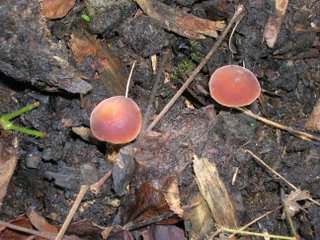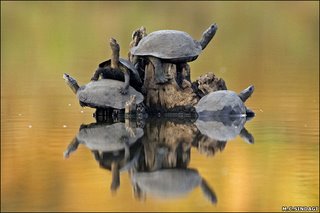
While I'm posting I'll add a photo showing the start of the Fungi Foray in Beer Wood. It wasn't raining at the start but did get a bit wet by the end but mild.
Searching this blog can make it more user friendly and easier to find items of interest to you.
Since starting in Jan 2006 there have been 61 posts. To see earlier posts you can either work your way through the archives or you can use the "search this blog" button on the top of the page. Select a post reference and click on it which will bring up the actual post.
If you use the search button this is part of what you will see:
Sorted by relevance - Sort by date. 61 posts matching blogurl:heartofthelevels.blogspot.com - showing 1 through 10
GM crops and DEFRA consultation
28 Oct 2006 by David
My post dated 27th Sept 2006 (which can be seen in the Archives section below) drew attention to the consultation by DEFRA on the proposed introduction of GM crops. Somerset County Council has just published its own submission to the ...
Heart of the Levels Wildlife Group - http://heartofthelevels.blogspot.com
test post
28 Oct 2006 by David
in case you are interested. I have found that after writing a post I wasn't able to publish it and got an error message to do with a java problem which I don't understand. I'm writing this from another computer to see if it publishes ok. ...
heart of the levels wildlife group - http://heartofthelevels.blogspot.com
Difficulties posting to the blog
28 Oct 2006 by David
Apologies for some disruption in the posts. I hope to clear it soon.
Heart of the Levels Wildlife Group - http://heartofthelevels.blogspot.com
GM crops consultation
28 Oct 2006 by David
I read in the local paper that the County Council had had its own consultation. A large number of individuals and organizations attended a meeting of the Councils Executive Board on 11th October at which the Council’s policy position ...
Heart of the Levels Wildlife Group - http://heartofthelevels.blogspot.com
RHS Rosemoor. Lichens
27 Oct 2006 by David
Having mentioned lichens, see my last post, I should add a few notes to go with these photographs. I had of course seen many lichens during our recent fungus foray but they were ignored whilst we concentrated on the fungi. ...
Heart of the Levels Wildlife Group - http://heartofthelevels.blogspot.com
more fungi, some lichen and a short story
26 Oct 2006 by David
its often surprising how we meet unexpected coincidences. This short story starts on the Sunday after the foray into the woods. During the clearing up in the village hall, after the expert identification display I saved some of the ...
heart of the levels wildlife group - http://heartofthelevels.blogspot.com
Fungi Foray II
26 Oct 2006 by David
Here are a few photos taken during our Fungi Foray, first out in the woods and later in the local village hall where the collected fungi were laid out for identification.I hope to get the correct names soon.
Heart of the Levels Wildlife Group - http://heartofthelevels.blogspot.com
Beer Wood Fungi Foray
22 Oct 2006 by David
If you have never been on an autumn trek into the woods in search of fungi then I can assure you, you have missed a treat. Today I was in Beer Woods, one of the best reserves in Somerset with about 60 other enthusiasts. ...














